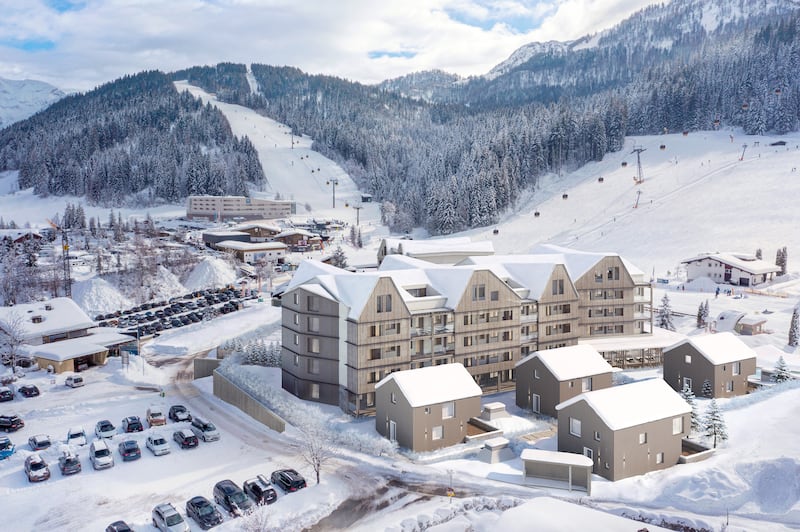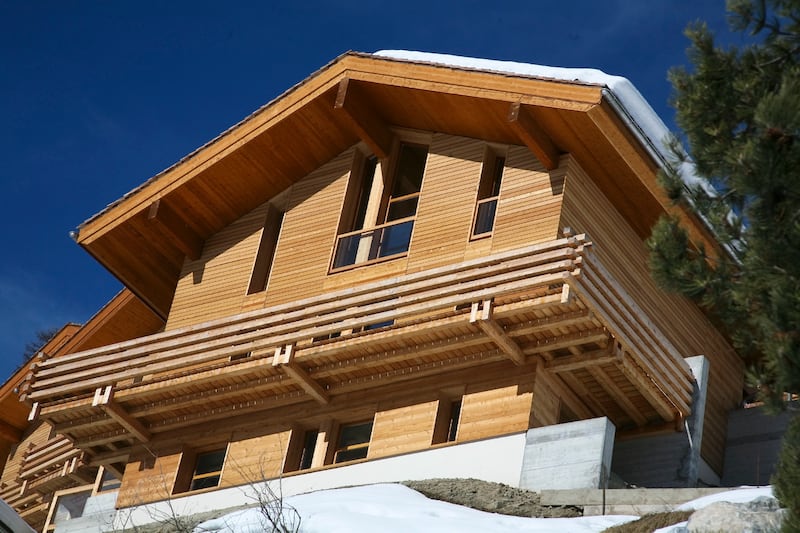Picture the scene. You ski out of your apartment every morning, hit the slopes, then spend the evening relaxing in an outdoor swimming pool or enjoying your glühwein at après-ski. In the summer, you can hop on your electric mountain bike, or hike up the slopes you skied down a few months before. What’s not to love?
Not much, perhaps. But with climate change expected to increasingly impact on snowfall, tougher local rules on foreign buyers and heady prices, buying a pied-à-terre on the slopes is not for the faint-hearted.
Giles Gale founded ski property specialist Alpine Property Finders some 15 years ago, at a time when many of its clients for property in Austria were Irish. Following the financial crisis demand dried up. Now, however, Gale is bringing the company back to Ireland. It has just opened a Cork sales office – and English-born Gale has even got his own Irish passport, thanks to a Derry-born grandfather.
Although Ireland is “not a huge market” when it comes to international buyers in the Alps, it is growing again, he says.
READ MORE
For the Irish, “70 per cent of the decision [to buy in the Alps] is about lifestyle and having somewhere for family holidays”, he says, adding that rental income is then seen as a “nice to have” add-on as it can help cover finance costs and allow the investment to be cash flow neutral.
And where do they like to buy?
“About 80 per cent of inquiries from Ireland are for Austria”, says Gale, adding that if you do buy there, local laws mean there is a high probability you will have to rent it out some of the time.

And depending on where you buy, renting can be lucrative; according to a ski report from international agent Knight Frank, for example, gross income of €80,000 is achievable, with a net income of €40,000 before tax, based on a three-bedroom chalet valued at around €1 million in the French resort of Chamonix and assuming a 30-week rental.
When it comes to a typical budget, Gale says it is typically of the order of €500,000-€700,000, with buyers looking for a two or three-bed apartment in areas like the Portes du Soleil in France, which incorporates resorts like Les Gets, Chalet and Morzine, and is close to the airport in Geneva or the region around Salzburg, including St Johann, Zell am See and Kitzbuhel.
“We do of course have people with budgets of €2 million-plus”, says Gale, citing an Irish client who bought a catered chalet in the Austrian resort of St Anton for about €2.5 million, “but the bulk of the market is in the €500,000-€700,000 bracket”.
Typically, buyers will bring about €200,000-€300,000 to the transaction and get financing with a local bank for the rest.
[ Nine great ski holiday destinationsOpens in new window ]
“Generally, you need at least 40 per cent cash as a down payment,” says Gale.
Switzerland doesn’t really factor with Irish buyers given that it’s more expensive – prices typically start at about €1 million – while buyers also have to deal with currency risk.
Market overview
Overall, ski resorts have enjoyed a few bumper years – from a property price perspective if not necessarily in terms of snowfall.
Post-pandemic, prices rose sharply – by about 20 per cent from 2021 to 2022. Last year, on the back of rising interest rates, prices started to soften.
A report from Savills into ski resorts found that those higher interest rates have impacted on investment, noting that “investor-type buyers can no longer generate positive returns if they have more than a 50 per cent loan-to-value mortgage”.

Across Savills’ Prime Price Index, for example (prime are properties priced at €750,000 and above), prices fell by more than 4 per cent for the year though they are still 41 per cent up on pre-pandemic levels.
Top of the peaks is US resort Aspen, loved by Hollywood A-Z listers, including the Kardashians as well as Beverly Hills housewives, where prices start at about €36,200 a square foot.
Back in Europe, it is high-cost Switzerland that dominates the most expensive resorts, led by Verbier, St Moritz and Zermatt. France – namely Val-d’Isere and Courchevel 1850 – also features strongly, but Austria has just three resorts in the top 20 (Lech, Mayrhofen and Kitzbuhel), and Italy just one (Cortina d’Ampezzo, which will host the Winter Olympics in 2026).
In its report, Knight Frank finds that supply remains tight and this is supporting prices. Back in September 2019, there were 403 properties listed for sale in Chamonix; by September 2023 this had shrunk to just 178, according to figures from Rightmove Overseas cited in the Knight Frank report.
This tight supply means that the impact of Brexit and local laws on overseas buyers may not be as great as might have been expected.
Bizarrely, lower resorts are still popular as long as they have access to high-altitude skiing
— Giles Gale
UK buyers now face difficulties buying in the European Union. Property buyers in Austria, for example, now need an EU passport while financing can be difficult to obtain in France if you don’t have an income in euro.
Of course, prices in ski resorts can be choppy; figures from Knight Frank showed that prices fell by about 10 per cent back in 2009, with other negative years reported in 2015, 2017 and 2018.
Climate change
Although rising interest rates may have hit prices last year, a bigger issue might be the weather. If you were skiing, or had friends or family send you photos from the Alps this year, you may have been surprised by the amount of green in the pictures.
Snowfall is becoming increasingly more variable; according to a report by Nature Climate Change, 53 per cent of European resorts are likely to suffer from poor snow cover should temperatures rise by more than 2°C. This means that resorts located at higher altitudes and those with better snow-making technologies, or north-facing slopes, will likely be better placed to maintain their position.
Take Savill’s Ski Resilience Index, which uses five metrics (snowfall, reliability, altitude etc) to measure the quality and reliability of a resort’s conditions, and its resilience against climate change. Globally, the US resorts of Aspen and Vail top the index while, in Europe, Switzerland’s Zermatt and France’s Val-d’Isere rank highest.

Picking a resort that has a long ski season makes sense if you are buying a property. Knight Frank finds that Gstaad has the longest ski season, at some 25.1 weeks, followed by Chamonix (23.1 weeks) and Val-d’Isere (22.1 weeks).
However, this doesn’t mean you should only look to buy in a high-altitude resort. If skiing is all you care about, then go high certainly but if summer holidays, plus rental income are a concern, a lower resort may be an option. As Gale points out, prices are going to be higher at altitude. And while the ski season may be longer, the overall season for rental purposes may in fact be shorter.
“Bizarrely, lower resorts are still popular as long as they have access to high-altitude skiing”, says Gale, pointing to Zell am See, which has a glacier 10 minutes away on a ski bus.
Better rental yields can also be achieved in resorts that have a good summer season. They may have a slightly shorter winter season but “high altitude resorts don’t have as much summer infrastructure” so those lower down may be of greater appeal during the summer.
“The resorts that might struggle are the ones that are in the middle”, says Gale, citing ones like Montchavin Les Coches in France.
So, considering a dual-season resort can help hedge against climate change issues.
According to the Compagnie du Mont-Blanc for example, about 40 per cent of Chamonix’s ski lift revenue is earned from May to October, while Knight Frank says that in Crans-Montana in Switzerland, about 44 per cent of overnight stays in 2022 took place in the summer months.
- Sign up for Business push alerts and have the best news, analysis and comment delivered directly to your phone
- Find The Irish Times on WhatsApp and stay up to date
- Our Inside Business podcast is published weekly – Find the latest episode here




















